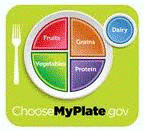Nutrition and Health Sciences, Department of

Department of Nutrition and Health Sciences: Dissertations, Theses, and Student Research
Date of this Version
Summer 8-14-2010
Document Type
Thesis
Abstract
Little information is available related to adolescent calcium intake and relationships with injuries they might suffer from sport participation. To determine calcium intake of high school athletes, to assess their self reported injury rates, and to examine the relationship between the two over a 12 month period of time. Participants received a questionnaire at their school and completed it anywhere they found convenient. Adolescent athletes in the Lincoln Public School system (n=43) that participated in at least one sport in the past year. Four age groups participated in the study with sixteen year olds having a significantly higher calcium intake at 1297 mg that of fourteen year olds. A variety of sports were represented with largest number of respondents participating in baseball/or softball at (55%). The next most played sport was basketball at (18%). Median total diet calcium was 1144.5 mg with a mean of 1182 mg + 567 mg. For the frequency of injuries that caused a missed practice or game in the past year, ankle injuries were the most common (25%). Knee injuries were the second most common (17%), followed closely by hand injuries (8%). Mean total diet calcium of athletes with five or more injuries that caused a missed practice or game was significantly higher at 1966 mg (P<.05) than athletes mean diet calcium with zero, one, two, and three injuries. Total milk calcium of those who reported three injuries that resulted in broken or fractured bones or dislocated joints was significantly higher (P<.05) at 1286 mg of total milk calcium than those who reported having zero, one, or two breaks or fractures. Athletes with higher calcium intakes have a higher number of reported injuries. This may be the result of increased vigorous activity which leads to increased calorie and calcium consumption. More importantly, this increased activity leads to an increased chance of injury. The greater calcium intake correlated with greater number of injuries may also be because of third parties advising the athletes who get injured to drink more milk and get more calcium in their diets because they have been injuries already.


Comments
A thesis Presented to the Faculty of The Graduate College at the University of Nebraska In Partial Fulfillment of Requirements For the Degree of Master of Science Major: Nutrition and Health Sciences Under the Supervision of Professor Wanda M. Koszewski and Professor Kaye Stanek Lincoln, NE August, 2010 Copyright 2010 Jeff K. Ebert